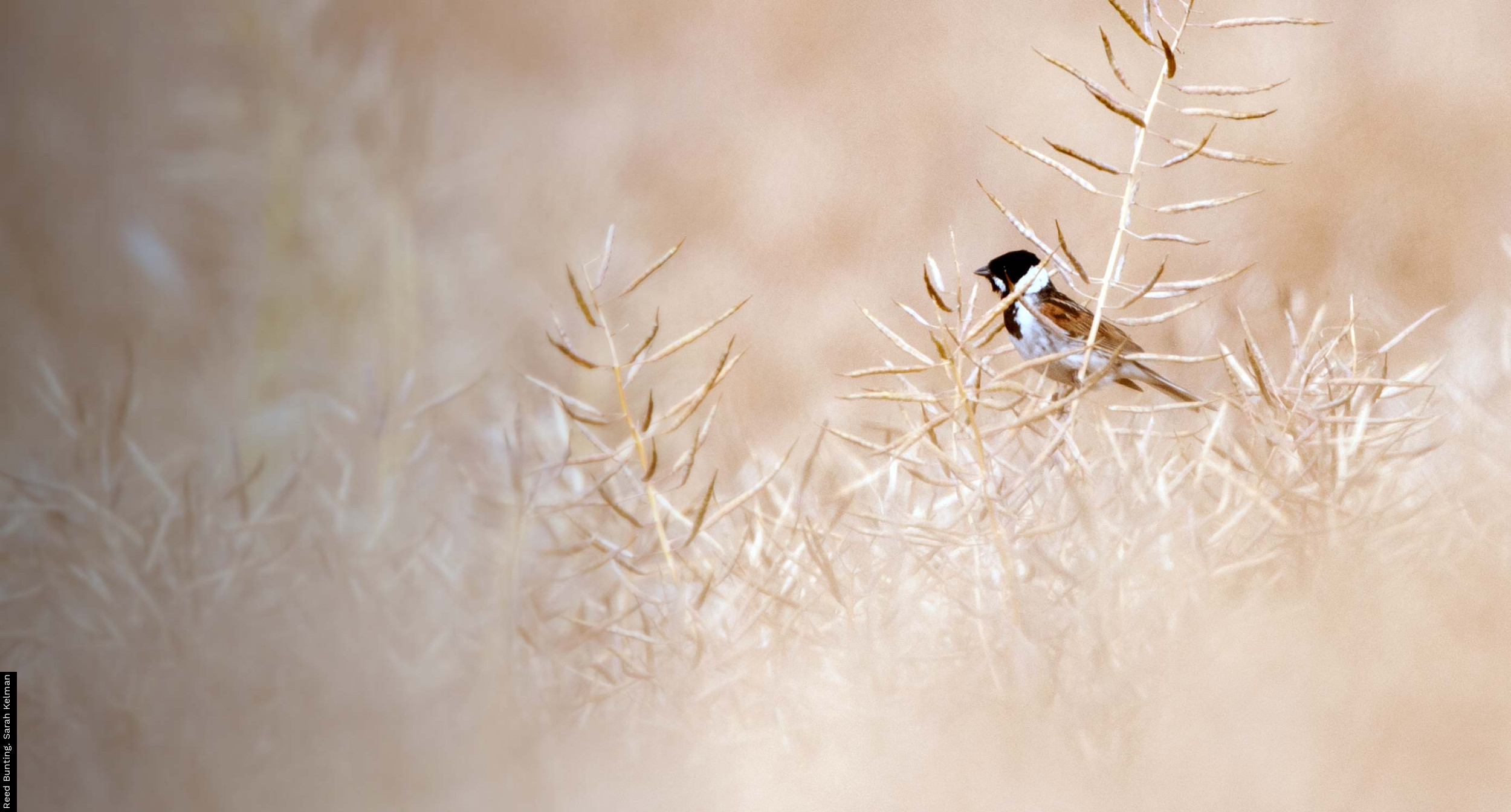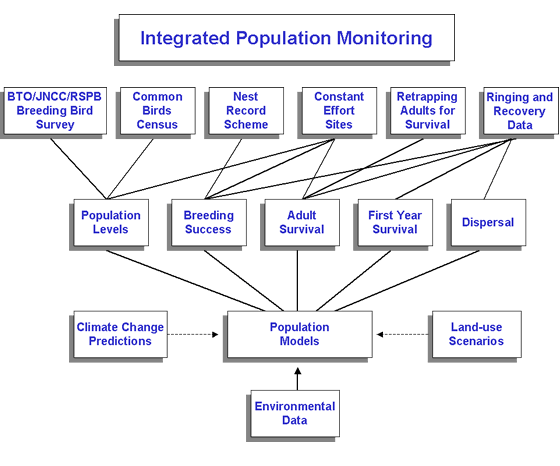Long-running bird surveys operated by BTO contribute to an overall programme of Integrated Population Monitoring (IPM) that has been developed by the BTO, in partnership with JNCC, to monitor the numbers, breeding performance and survival rates of a wide range of bird species. IPM has the following specific aims (Baillie 1990, 1991):
- to establish thresholds that will be used to notify conservation bodies of requirements for further research or conservation action;
- to identify the stage of the life cycle at which demographic changes are taking place;
- to provide data that will assist in identifying the causes of such changes; and
- to distinguish changes in population sizes or demographic rates induced by human activities from those that are due to natural fluctuations.
Changes in numbers of breeding birds have been measured by:
- the BTO/JNCC/RSPB Breeding Bird Survey (BBS) – which began in 1994 and replaced the CBC (below) as the major monitoring scheme for landbirds, after a seven-year overlap. BBS is based on around 3,000 1-km squares, within each of which birdwatchers count and record birds in a standardised manner along a 2-km transect. Because the survey squares are chosen randomly, the results are representative of all habitats and regions. Combined CBC/BBS indices now provide long-running and ongoing population monitoring for many common birds.
- the Common Birds Census (CBC) – which ran from 1962 to 2000. This scheme mapped the breeding territories of common birds through intensive fieldwork on 200–300 mainly farmland and woodland plots each year, averaging about 70 and 20 ha respectively.
- the Waterways Breeding Bird Survey (WBBS) – which began in 1998 and replaced the WBS (below) as the major monitoring scheme for breeding birds along rivers and canals, after a ten-year overlap. It is a transect scheme akin to BBS but with the transects running alongside linear waterways. Transects comprise up to ten 500-m sections and cover typically 3–3.5 km of bird-rich habitat. Around 250–300 sites are covered each year, mostly randomly selected. Combined WBS/WBBS indices now provide long-running and ongoing population monitoring for many common waterside birds.
- the Waterways Bird Survey (WBS) – which ran from 1974 to 2007. WBS observers mapped the territories of birds along rivers, streams and canals on 80–130 plots each year, each on average 4.5 km in length. Around 70 of these sites are currently incorporated within WBBS.
- the Constant Effort Sites scheme (CES) – which began in 1983 and is based on breeding-season bird ringing at over 100 sites. The catching effort is kept constant at each site during each year, so that changes in numbers of birds caught will reflect population changes and not variation in catching effort.
- the Heronries Census – through which counts of 'apparently occupied nests' have been collected from a high proportion of the UK's heronries every year since 1928.
Changes in breeding performance are measured by:
- the Nest Record Scheme – which began in 1939 and collates standardised information on up to 35,000 individual nesting attempts per year. This allows the measurement of:
- laying dates
- clutch sizes
- brood sizes
- nesting success during egg and chick stages
- fledglings per breeding attempt (integrating success across all nesting stages).
- CES (see above) – which provides information on overall productivity for a range of species by measuring the ratio of juveniles to adults caught each year.
Changes in survival are measured by:
- the British and Irish Ringing Scheme – which provides information on the finding circumstances and longevity of ringed birds found dead by members of the public.
- CES also provides information on survival rates, based on the recapture of ringed birds at constant-effort sites.
- Further information on survival rates is provided through the Retrapping Adults for Survival scheme (RAS).
The ways in which the schemes fit together are shown in the diagram below, which also demonstrates the way in which the BTO aims to combine all this information, using population models, to elucidate the mechanisms behind the changes we observe in population size.
This report should be cited as: Woodward, I.D., Massimino, D., Hammond, M.J., Harris, S.J., Leech, D.I., Noble, D.G., Walker, R.H., Barimore, C., Dadam, D., Eglington, S.M., Marchant, J.H., Sullivan, M.J.P., Baillie, S.R. & Robinson, R.A. (2019) BirdTrends 2019: trends in numbers, breeding success and survival for UK breeding birds. BTO Research Report 722. BTO, Thetford. www.bto.org/birdtrends






Share this page